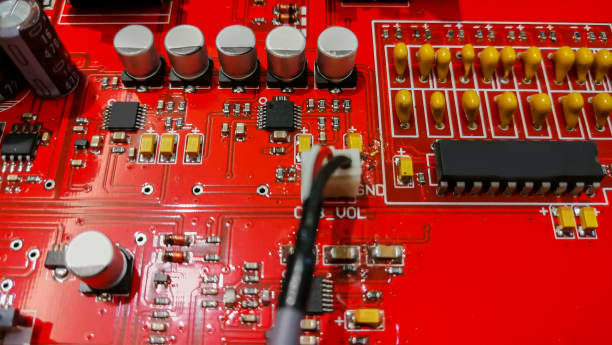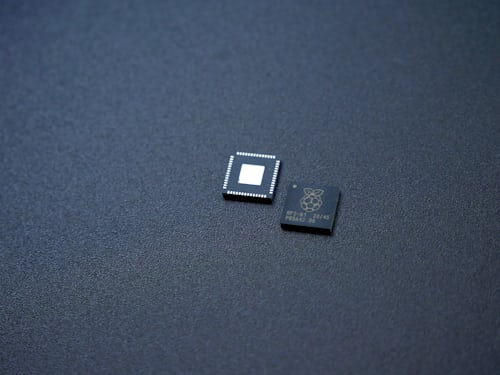Content Menu
● Introduction
● Understanding SMD Marking Codes
>> Common Elements in Marking Codes
● Steps to Decode SMD Marking Codes
>> Gather Information
>> Inspect the Component
>> Identify Common Patterns
>> Use Online Resources
>> Consult Manufacturer Documentation
>> Analyze Physical Characteristics
>> Seek Expert Assistance
● Challenges in Decoding SMD Marking Codes
● Practical Examples of Decoding SMD Codes
● Conclusion
● Related Questions and Answers
>> 1. What are surface mount device marking codes?
>> 2. How do I find the manufacturer of an SMD component?
>> 3. Are there standard formats for SMD resistor values?
>> 4. What should I do if I can't decode an SMD code?
>> 5. How do I verify if an SMD component is functioning correctly?
Introduction
Surface Mount Devices (SMDs) have become an essential part of modern electronics due to their compact size and efficiency. However, identifying these components can be challenging, especially when relying on marking codes. This article will delve into the methods for decoding SMD marking codes, providing a comprehensive guide for engineers, hobbyists, and anyone involved in electronics.

Understanding SMD Marking Codes
SMD marking codes are alphanumeric characters printed on the surface of electronic components. These codes serve as identifiers, allowing users to ascertain the type and specifications of a component without needing to refer to a full part number. Given the small size of SMDs, manufacturers often cannot print complete part numbers; hence, they use abbreviated codes.
Common Elements in Marking Codes
1. Manufacturer Code: The initial characters often indicate the manufacturer.
2. Part Number: Some codes include a segment that corresponds to the part number or series.
3. Date Code: Many manufacturers include a date code to signify when the component was produced.
4. Additional Information: Some markings may provide details about voltage ratings, tolerance levels, or other specifications.
Steps to Decode SMD Marking Codes
Decoding SMD marking codes involves several steps:
Gather Information
Start by collecting any available information about the SMD component, including datasheets or specifications. Knowing the manufacturer can significantly aid in decoding.
Inspect the Component
Examine the SMD carefully for any printed or etched markings. The style and location of these markings can vary widely among manufacturers.
Identify Common Patterns
Familiarize yourself with common patterns in marking codes:
- Resistors: Often follow an XXY pattern where X represents significant figures and Y indicates zeros (e.g., "103" means 10 kΩ).
- Capacitors: Typically use three-digit codes where the first two digits are significant figures and the last digit is a multiplier (e.g., "104" means 100 nF).
- Transistors: Often have unique identifiers that may include letters denoting type (e.g., NPN or PNP).
Use Online Resources
Several online databases can assist in decoding SMD marking codes:
- SMD Codebook: A comprehensive resource for identifying various SMDs based on their marking codes.
- ChipDocs and SMD Codebook: These platforms allow users to search for specific components using their marking codes.

Consult Manufacturer Documentation
If possible, refer to the manufacturer's documentation or website for detailed specifications related to the marking code.
Analyze Physical Characteristics
Consider the physical characteristics of the component such as package type and pin configuration, which can provide additional clues for identification.
Seek Expert Assistance
If you encounter difficulties, consider consulting forums or communities dedicated to electronics where experienced professionals can offer insights.
Challenges in Decoding SMD Marking Codes
Decoding SMD marking codes is not always straightforward due to several factors:
- Lack of Standardization: There is no universal standard for marking codes across all manufacturers, leading to variations that can be confusing.
- Counterfeit Components: Some counterfeit components may have misleading or incorrect markings, making identification more difficult.
- Limited Space: The small size of many SMDs restricts how much information can be printed on them.
Practical Examples of Decoding SMD Codes
To illustrate the process of decoding SMD marking codes, consider the following examples:
- Example 1: A component marked "LM317" is likely a voltage regulator based on common industry knowledge.
- Example 2: A resistor marked "100" would typically indicate a resistance of $$10 \times 10^0$$ ohms, or simply 100 ohms.
Conclusion
Decoding SMD marking codes is an essential skill for anyone working with electronic components. By understanding the structure of these codes and utilizing available resources, you can efficiently identify components and ensure proper functionality in your designs.
In summary, here are some key takeaways:
- Familiarize yourself with common marking patterns.
- Utilize online databases for assistance.
- Consult manufacturer documentation when possible.
- Analyze physical characteristics for additional clues.
Mastering these techniques will enhance your ability to work with surface mount devices effectively.

Related Questions and Answers
1. What are surface mount device marking codes?
Surface mount device marking codes are alphanumeric characters printed on electronic components that serve as identifiers for manufacturers and specifications due to space limitations on small packages.
2. How do I find the manufacturer of an SMD component?
You can find the manufacturer by decoding the first few characters of the marking code, which often represent the manufacturer's code. Online databases can also help identify manufacturers based on these codes.
3. Are there standard formats for SMD resistor values?
Yes, SMD resistors typically follow an XXY format where X represents significant figures and Y indicates how many zeros follow (e.g., "103" equals 10 kΩ).
4. What should I do if I can't decode an SMD code?
If you cannot decode an SMD code, consult online databases or forums dedicated to electronics where experienced users may assist you in identifying the component.
5. How do I verify if an SMD component is functioning correctly?
You can verify an SMD component's functionality using testing devices such as LCR meters or multimeters that measure resistance, capacitance, or voltage levels according to its specifications.




















